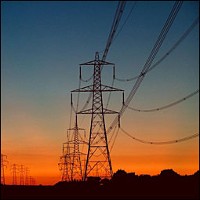Engineers at Pacific Northwest National Laboratory (PNNL) in Richland, Washington have created a more efficient fuel cell system that can provide electric power for neighborhoods. The PNNL researchers published their findings last month in the Journal of Power Sources (paid subscription required).
The solid oxide fuel cell system developed at PNNL, a division of the U.S. Department of Energy, takes oxygen from the air and converts it to a negatively-charged ion that reacts to methane, the basic ingredient of natural gas. That reaction creates electric power, with steam and carbon dioxide as by-products. The advantage of fuel cells over conventional power is its efficiency; solid-oxide fuel cells can convert up to 60 percent of their fuel into energy, compared to about 18 percent for gasoline-powered generators. These fuel cells, therefore, can produce more energy with less fuel and fewer greenhouse gas emissions.
Most fuel cells today are being designed as replacements for conventional coal- or gas-fired power plants, but the PNNL project aimed at developing a fuel cell for neighborhoods or communities. The demonstration system they developed generates about 2 kilowatts (kW) of power, equivalent to the consumption of a typical home in the U.S., which the PNNL team says can be scaled up to 100 kW, enough to power 50 homes.
The engineers used a process called external steam reforming to achieve higher efficiency levels that mixes steam with the methane fuel to create hydrogen and carbon monoxide, which in turn reacts with oxygen in the air to create electric power. Previous attempts to use steam reforming inside fuel cells created large variations in heat, weakening and eventually breaking the ceramic layers in the fuel cell. The PNNL design performs steam reforming outside of the fuel cell, using a heat exchanger the separates the hot exhaust from the cooler gas, yet still warm enough to react with the oxygen and create electric power.
This solid oxide fuel cell uses multiple heat exchangers with multiple walls, arrayed in a series of looping microchannels narrower than a paper clip. This design increases the surface area of the heat exchangers, allowing more heat to be transferred and making the system more efficient. Also with this design, little additional pressure is needed to move the gas through the turns and curves of the looping channels.
In addition, the system uses the exhaust from the heat exchanger, made of steam and heat byproducts, to maintain the steam reforming process. As a result, the fuel cell does not need an external power source to heat the water to create steam. And recycling the steam enables the fuel cell to use some of the leftover fuel not consumed in the first pass through the cell.
Lab tests showed the system’s net efficiency ranged from 48.2 percent at 2.2 kW to 56.6 percent at 1.7 kW. The team believes the system’s efficiency can be raised to 60 percent with a few more adjustments.
“There still are significant efforts required to reduce the overall cost to a point where it is economical for distributed generation applications,” says Vincent Sprenkle, a chief engineer of PNNL’s solid oxide fuel cell development program, and one of the authors of the journal paper. “However, this research shows that smaller solid oxide fuel cells that generate between 1 and 100 kilowatts of power are a viable option for highly efficient, localized power generation.”
Read more:
- Apple Files Patent Applications for Fuel Cell Power
- Nanoparticle Size Affects Hydrogen Release in Fuel Cells
- Engineers Develop Nanotech Solar Thermal Fuel Cell
* * *


 RSS - Posts
RSS - Posts
[…] National Lab Develops Demonstration Community Fuel Cell […]